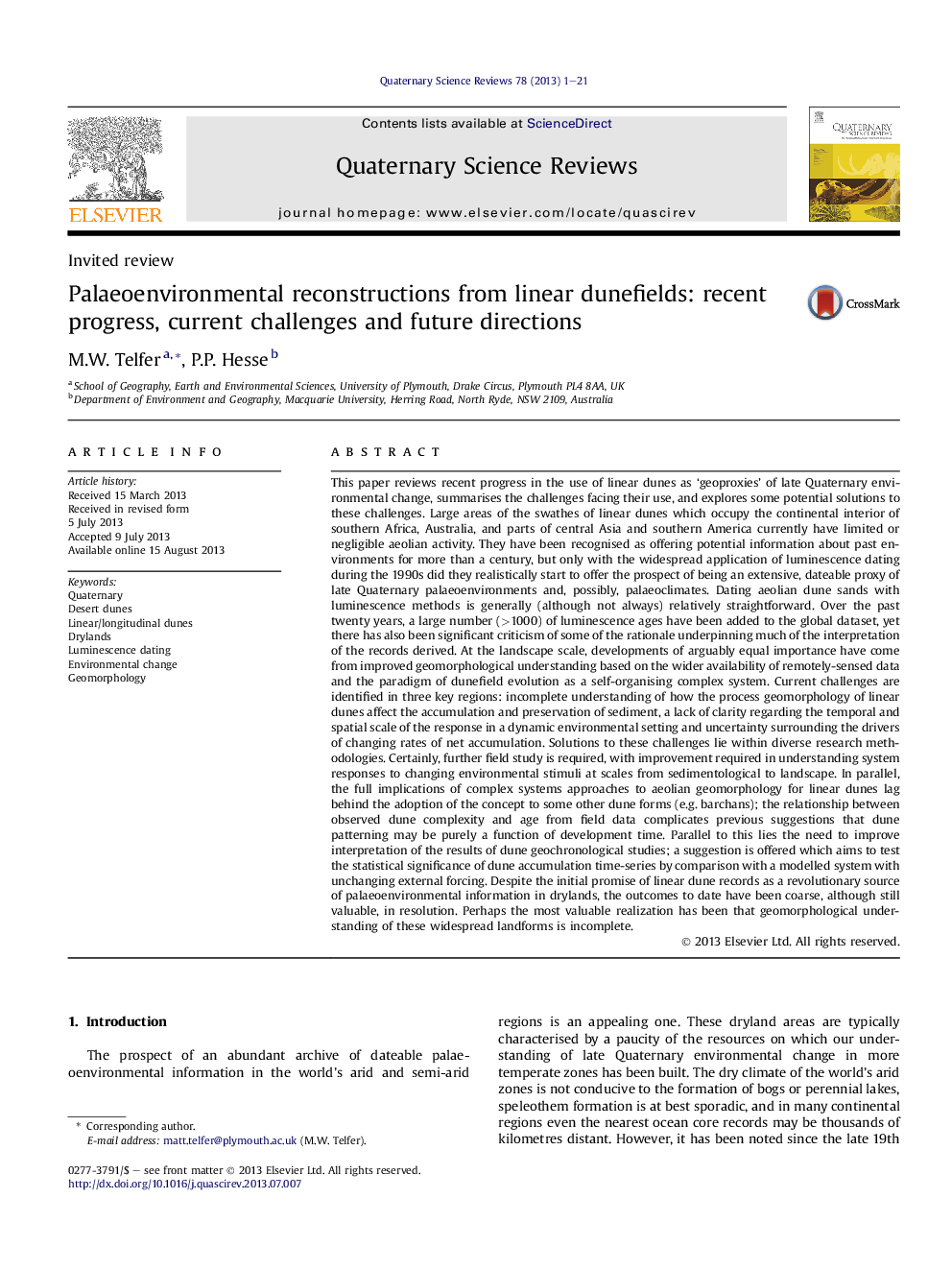| کد مقاله | کد نشریه | سال انتشار | مقاله انگلیسی | نسخه تمام متن |
|---|---|---|---|---|
| 6445630 | 1640856 | 2013 | 21 صفحه PDF | دانلود رایگان |
عنوان انگلیسی مقاله ISI
Palaeoenvironmental reconstructions from linear dunefields: recent progress, current challenges and future directions
ترجمه فارسی عنوان
بازسازی های محیطی پالئوس از میدان های خطی خطی: پیشرفت اخیر، چالش های فعلی و جهت های آینده
دانلود مقاله + سفارش ترجمه
دانلود مقاله ISI انگلیسی
رایگان برای ایرانیان
کلمات کلیدی
کواترنر، تپه های کویر خطوط / طولی تپه، خشکبار دوستیابی لومینسانس، تغییر محیطی، ژئومورفولوژی،
موضوعات مرتبط
مهندسی و علوم پایه
علوم زمین و سیارات
زمین شناسی
چکیده انگلیسی
This paper reviews recent progress in the use of linear dunes as 'geoproxies' of late Quaternary environmental change, summarises the challenges facing their use, and explores some potential solutions to these challenges. Large areas of the swathes of linear dunes which occupy the continental interior of southern Africa, Australia, and parts of central Asia and southern America currently have limited or negligible aeolian activity. They have been recognised as offering potential information about past environments for more than a century, but only with the widespread application of luminescence dating during the 1990s did they realistically start to offer the prospect of being an extensive, dateable proxy of late Quaternary palaeoenvironments and, possibly, palaeoclimates. Dating aeolian dune sands with luminescence methods is generally (although not always) relatively straightforward. Over the past twenty years, a large number (>1000) of luminescence ages have been added to the global dataset, yet there has also been significant criticism of some of the rationale underpinning much of the interpretation of the records derived. At the landscape scale, developments of arguably equal importance have come from improved geomorphological understanding based on the wider availability of remotely-sensed data and the paradigm of dunefield evolution as a self-organising complex system. Current challenges are identified in three key regions: incomplete understanding of how the process geomorphology of linear dunes affect the accumulation and preservation of sediment, a lack of clarity regarding the temporal and spatial scale of the response in a dynamic environmental setting and uncertainty surrounding the drivers of changing rates of net accumulation. Solutions to these challenges lie within diverse research methodologies. Certainly, further field study is required, with improvement required in understanding system responses to changing environmental stimuli at scales from sedimentological to landscape. In parallel, the full implications of complex systems approaches to aeolian geomorphology for linear dunes lag behind the adoption of the concept to some other dune forms (e.g. barchans); the relationship between observed dune complexity and age from field data complicates previous suggestions that dune patterning may be purely a function of development time. Parallel to this lies the need to improve interpretation of the results of dune geochronological studies; a suggestion is offered which aims to test the statistical significance of dune accumulation time-series by comparison with a modelled system with unchanging external forcing. Despite the initial promise of linear dune records as a revolutionary source of palaeoenvironmental information in drylands, the outcomes to date have been coarse, although still valuable, in resolution. Perhaps the most valuable realization has been that geomorphological understanding of these widespread landforms is incomplete.
ناشر
Database: Elsevier - ScienceDirect (ساینس دایرکت)
Journal: Quaternary Science Reviews - Volume 78, 15 October 2013, Pages 1-21
Journal: Quaternary Science Reviews - Volume 78, 15 October 2013, Pages 1-21
نویسندگان
M.W. Telfer, P.P. Hesse,
